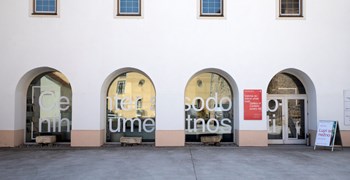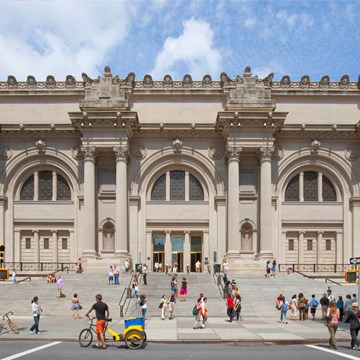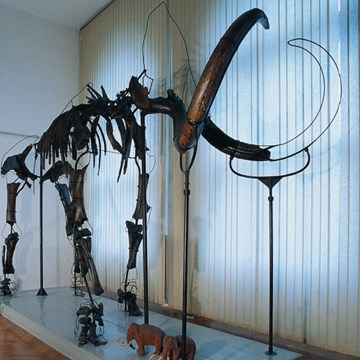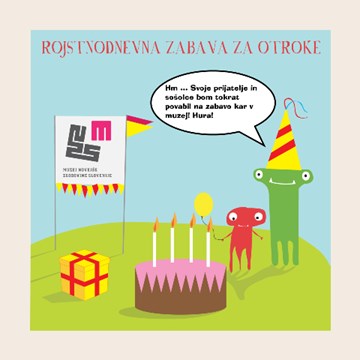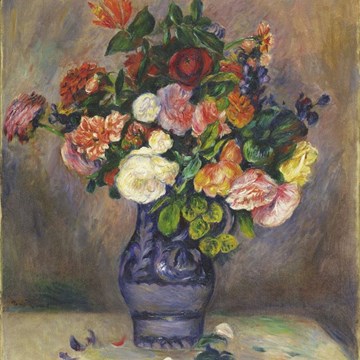Change in the Network / Miha Godec, Tamara Lašič Jurković, Peter Koštrun, Edina Muftić, Špela Petrič, Staš Vrenko
Exhibition opening: Friday, 28 June, at 7 p. m. in the Gallery of Contemporary Art.
The exhibition Change in the Network focuses on the gravity of the anthropogenic impact on the environment and the necessity of moving away from anthropocentrism – on the changes that humans have caused and continue to cause with their recklessness and on the need for radical change in the relationship with the non-human other. It joins the many endeavours to shed light on what is undoubtedly the most important topic of contemporaneity through a selection of artworks that approach the subject in different ways. They are all characterised by addressing the connectedness, interlacement and co-dependence of humans and the entire biosphere, as well as the need for a shift to a perspective that includes changes in ethics, politics and lifestyle, primarily through affective environments – by introducing a specific atmosphere, sensory impression, involvement and experience. It brings together six installations that utilise the creation of this type of sensitive, intense and purposefully communicative environment, which can embrace and touch the body and emotions of the viewer, as an instrument of a condensed address, which as such has the potential to contribute to a deepening of awareness of the critical state of the world in which we find ourselves.
The anthropogenic impact on the environment – let us remember the loss of biodiversity, the figures that one million animal species and one in five plants are threatened with extinction, and the fact that the Arctic has warmed almost four times faster than the rest of the world in the last four decades, and faster than predicted – is so great, that thinkers like Morton, one of the most quoted environmental philosophers of the last two decades, especially in the arts, have abandoned the concept of nature and the natural in the sense we are used to – because there is simply no more pure nature untainted by the repercussions of human activity left. As he writes in his book Hyperobjects: Philosophy and Ecology after the End of the World, today “Hyperobjects such as global warming and nuclear radiation surround us, not some abstract entity such as Nature or environment or world.” We have created them in the belief that we can control not only other people but also all other living beings and the planet. He emphasises that what is urgently needed in ecological thinking is a complete reversal of thought that must no longer view humans as entities outside or above everything that surrounds them, but merely as one entity in a web of human and non-human, animate and inanimate beings. Only with this changed attitude towards the other, be it animal, plant or substance, that is not based on human interests and exploitation, can we really move towards effective environmental protection and away from the destruction that threatens everyone, us included.
In the installation Vegetariat: Work Zero (2019), Špela Petrič puts plants in the role of human allies and sources of information found on the Internet. The artist uses the “work” of the plants, which is visible to the viewer in the gallery space through drilling machines, to intervene in the world of social control: via an interface, she connects the plants to smartwatches that record their cell activity and send the data to various applications. The plants thus become subjects that, like humans, leave traces in the digital world – and, like algorithms, unable to identify the real source of information, become an entity equivalent to a human being. The large-format photographs in the series Bitterness (2023) of Peter Koštrun, close-ups of trapped and dead insects sharply focused on a bright yellow ground, imprint themselves on the viewer’s body like a trace or a print. From a distance, the almost abstract images, which are inscribed with a clear sense of discomfort and bitterness due to their proximity seem like an eloquent metaphor for what human proximity entails. Miha Godec, whose art practice is primarily concerned with the consequences of human impact on aquatic ecosystems, incorporates the process of water purification, condensation and the sonification properties of water. In the installation D.still (2022), the meditative atmosphere, emphasised by the subtle sounds of water, plays a key role in the artist’s intention to highlight the importance of clean water with the artwork and to sensitise the viewer’s feeling for nature and responsibility towards it. The installation by Edina Muftić, Botanica: Metagenomic Mapping (2024), and the video game on which it is based, address climate change and the dangerous changes to the Arctic ecosystem. The environment in the video game is generated using the data from NASA’s ABoVE large-scale environmental change study, in which scientists warn of the rapidly changing Arctic and Boreal region. By combining picturesque images of changing vegetation with scientific research, the artist emphasises the interconnectedness of the entire planet when human risks in one part of the world have global consequences. The severity of the climate crisis and the urgency of broader awareness are emphasised through an immersive experience, where the viewer becomes a researcher and initiator of change in the interactive environment of a video game. An environment, in which the physical participation and experience of the viewer is essential, is also characteristic of the sound installation Hacked Meditation (2021) by Tamara Lašič Jurković. The piece is a guided meditation that does not focus on “self-care”, but reveals the microbial life and hidden relationships that are invisible to the human eye (among other things, we learn that the human body is 44% human cells, while 56% are non-human, and that only 0.01% of all cells on Earth are human), as well as, instead of an anthropocentric view, a connectedness and dependence to other natural systems and biotic organisms.
The changes in the world can be understood primarily based on data. Particularly global warming and its extent can only be grasped, at least roughly, through figures and diagrams. The installation ,separated values (2022) by Staš Vrenko, which consists of an electron beam projection and phosphorescent objects that float in a darkened room that receive and emit light in a rhythm, is reminiscent of this context and the increasingly frequent weather extremes. Objects based on digital databases of social and natural phenomena, including the weather, are data models in physical form that can also be read as a materialised perception of the environment and its changes through data, representing a peculiar visualisation of reality that feels familiar and strange at the same time.
Zavod Celeia – Center for Contemporary Arts
Supported by: Municipality of Celje
Curator: Irena Čerčnik
Text: Irena Čerčnik
Exhibitions and events

Karin Vrbek: People Are Like Houses
Temporary exhibition at Center for Contemporary Arts Celje until 26.01.2025The artist Karin Vrbek does not limit her artistic practice to a specific medium, but combines the use of video, sound, installation, writing and the creation of visual messages into holistic...

How are you in Celje? How are you in Graz?
Temporary exhibition at Center for Contemporary Arts Celje until 30.03.2025Daniela Brasil, Andreja Džakušič, Maja Hodošček, Luise Höggerl, Mark Požlep, Mojca Senegačnik, Helene Thümmel, Anton Tkachenko, Karin Vrbek, zweintopf Celje, Slovenia & Graz, Austria In the...
Activities from this museum
We don't have anything to show you here.
